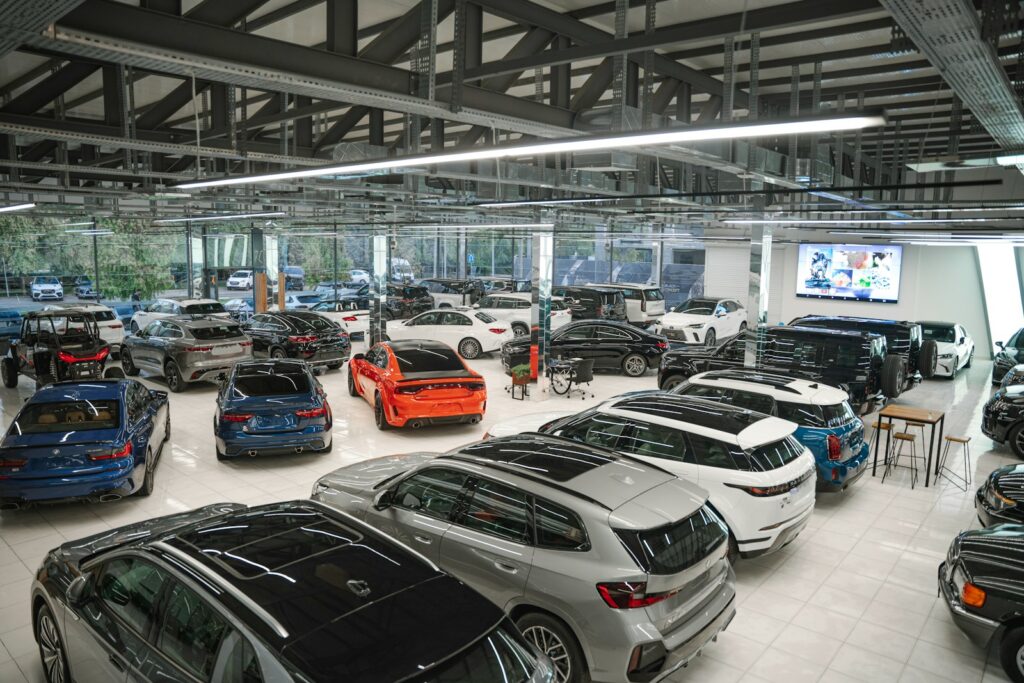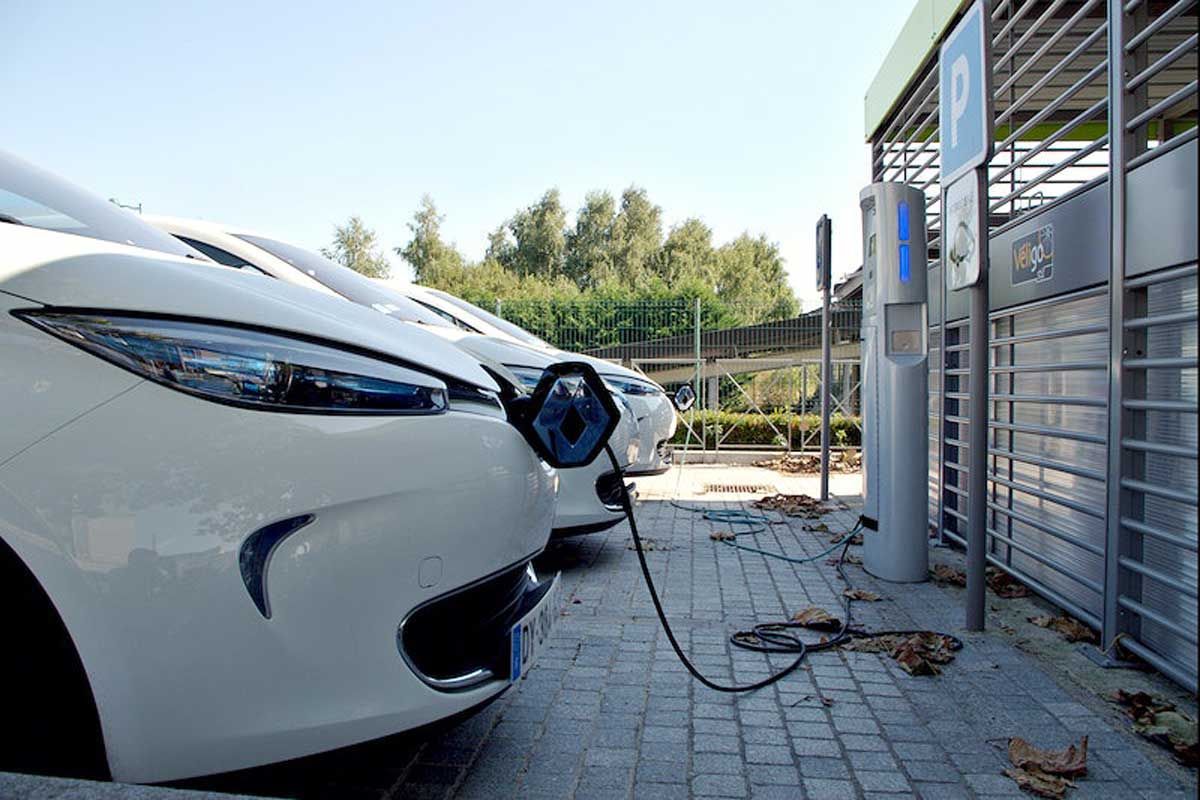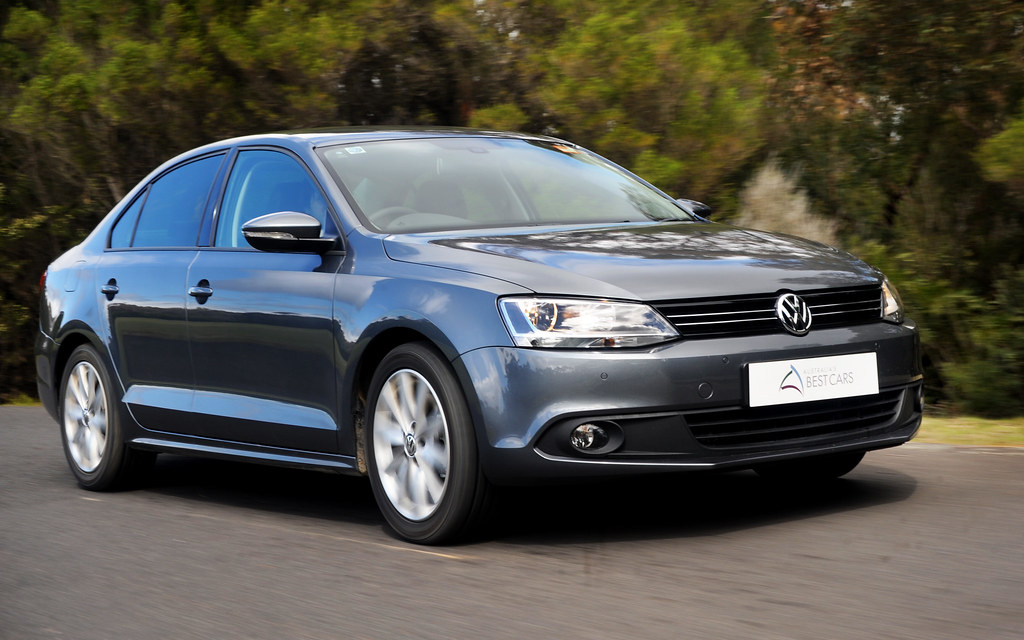
In an era where digital subscriptions define daily life, from online streaming to meal kits, the automotive industry is undergoing a profound transformation. American consumers, already navigating a landscape of pervasive monthly fees, are now encountering a new frontier: vehicle subscriptions. This shift is not merely an extension of existing consumer habits but a strategic pivot by automakers aiming to redefine vehicle access, ownership, and revenue generation, challenging traditional models of car purchasing and leasing.
While the average U.S. consumer pays a significant sum monthly for streaming services alone, often feeling the pinch of ‘subscription fatigue,’ automakers are increasingly integrating subscription-based features into new vehicles. This evolving model offers everything from advanced safety systems to performance enhancements, many of which were once standard or one-time purchases. Understanding this complex landscape requires a detailed analysis of the services offered, the technology enabling them, the market dynamics at play, and crucially, the evolving consumer sentiment that will ultimately shape its success.
This in-depth exploration will delve into the intricacies of automotive subscription services, examining the specific offerings from major manufacturers, the technological backbone that facilitates these new models, and the significant business and economic implications for both the industry and its customers. We will also analyze the critical role of data, consumer privacy concerns, and the future trajectory of this rapidly expanding market, which promises to fundamentally reshape how Americans interact with their vehicles.
1. **The Rise of Automotive Subscriptions: Beyond Traditional Ownership**Most Americans today are accustomed to a myriad of subscriptions, ranging from online shopping to streaming entertainment and home delivery services. This pervasive subscription model, which has become a significant part of the U.S. consumer’s monthly expenditure—averaging $48 per month on video-streaming alone, as per Deloitte’s 2024 Digital Media Trends report—is now extending its reach into the automotive sector. Automakers are increasingly adopting this paradigm, asking vehicle owners to pay monthly or annual fees for services and features previously offered as standard or as one-time purchase options.
This shift fundamentally redefines the traditional relationship between consumers and their vehicles, moving from outright ownership to a model of flexible access. The automotive world, once a bastion of independence and long-term commitment, is now embracing a subscription-based approach that bundles access to cars with essential services like maintenance, insurance, and enhanced flexibility. This evolving landscape is driven by changing consumer preferences that prioritize convenience and adaptability over the traditional burdens of vehicle ownership.
The financial implications of this transformation are substantial. The car subscription market, valued at $5 billion in 2022, is projected to surge to $100 billion by 2032, exhibiting a staggering 35% annual growth rate. This rapid expansion signals a potential future where mobility is viewed increasingly as a service rather than a product to be owned. This trajectory compels automakers and dealerships to adapt their business strategies to meet these evolving demand patterns, creating new revenue cycles that maximize value throughout a vehicle’s lifecycle.
Read more about: A Deep Dive: The Luxury Vehicles That Lose Value Fastest and Why Owners Are Furious
2. **Automaker Examples: What’s on Offer (and at What Cost)**Major automotive manufacturers are already deeply invested in the subscription economy, offering a diverse array of features and services on a recurring payment basis. These offerings span connected services, convenience features, safety enhancements, and even performance boosts. The pricing structures vary significantly, reflecting the diverse nature of these additions and the premium associated with on-demand activation.
For instance, BMW offers its Drive Recorder feature for $149 for the lifetime of the vehicle or $39 per year, while traffic-camera information is available for $25 annually. Ford provides its BlueCruise highway hands-free driving system free for 90 days, after which it can be activated for $495 a year or $49.99 a month. Alternatively, customers can opt for a one-time fee of $2,495 at the time of vehicle order for 2025 model year vehicles, or $495 for a year of service at order placement.
General Motors’ Super Cruise system is priced at $2,200 up front for three years on Chevrolet and GMC vehicles, and $2,500 for Cadillacs, subsequently transitioning to a subscription of $25 a month or $250 per year. Mercedes-Benz bundles live weather, traffic, and connected navigation into its Mercedes Me Connect for a $150 annual subscription, while a Digital Extra such as an Acceleration Increase commands a premium of $1,200 a year. Tesla’s Full Self-Driving system is available for a one-time payment of $12,000 or $200 per month.
Even more basic convenience features are being brought into the subscription model. Toyota, for example, charges $80 a year or $8 a month for remote start functionality. These examples illustrate the wide spectrum of services—from advanced driver-assistance systems to simple convenience features—that automakers are now offering as subscription-based add-ons, signaling a significant shift in how value is perceived and monetized within the vehicle ecosystem.

3. **The Technological Backbone: Connectivity and Software-Defined Vehicles**The proliferation of car subscription services is largely attributable to the advancements in vehicle technology, particularly the emergence of software-defined vehicle (SDV) architectures and enhanced connectivity. These foundational technologies allow for the seamless delivery of over-the-air (OTA) updates, mirroring the functionality found in smartphones. This capability empowers vehicle owners to download new applications and activate features remotely, unlocking new avenues for revenue generation for automakers.
Fanni Li, associate manager connected car and vehicle experience at S&P Global, highlights this strategic pivot, stating, “As vehicles become more software-centric, automakers see opportunities to monetize features that can be activated or enhanced via software updates.” Li further emphasizes the economic benefit for manufacturers: “Subscription services provide a steady revenue stream as opposed to traditional one-time vehicle sales.” This shift from transactional sales to recurring revenue models represents a fundamental change in the automotive industry’s financial strategy.
Automakers are aggressively pursuing these new revenue streams. In 2021, GM CEO Mary Barra announced an ambitious goal of generating $20 to $25 billion annually through subscription services by 2030. Ford CEO Jim Farley similarly indicated the immense potential, reporting that the automaker has already made “hundreds of millions” on software with gross margins exceeding 50 percent, and expecting to earn “10x that in the coming years, just based on the growth we see.” These projections underscore the significant financial incentives driving the industry’s embrace of subscriptions.
Furthermore, the complexity of developing and maintaining sophisticated in-car software has led many automakers to forge strategic partnerships with technology giants. Companies like Google, with its Android Automotive OS, Amazon, and Microsoft, are providing the underlying platforms that allow OEMs to offer familiar and user-friendly interfaces. Kevin Mixer, senior director analyst at Gartner, notes that this approach helps automakers become “much more aligned to the digital experiences that all of us are looking for in our day-to-day lives” and enables them to “take control of the overall experience” while focusing on vehicle-specific integrations.

4. **The Precedent: Learning from OnStar’s Legacy**The concept of subscription services from automakers is not entirely novel; General Motors pioneered this model almost three decades ago with the launch of OnStar. This service, which quickly became a success, offered “telematic” features such as automatic crash notification, emergency roadside assistance, and other services enabled by an in-vehicle cellular modem. Its success led other automakers to quickly adopt similar offerings, establishing a precedent for value-added, recurring services in the automotive sector.
Andrew Hart, CEO of SBD Automotive, identifies several key factors contributing to OnStar’s enduring success. He points to GM’s strategic decision to “set up a separate organization driven by selling services” and to “force every brand and every car line to include it.” Critically, sales personnel were incentivized to enroll customers in OnStar subscriptions, and practices like “collecting credit card information so once the free trial period ended the subscription rolled over” ensured high conversion and retention rates. These early lessons in organizational structure, product integration, and sales incentives proved instrumental in establishing a robust subscription base.
With the advent of ubiquitous 5G in-car connectivity and widespread smartphone adoption, OnStar-style services have expanded dramatically. Today, these offerings include advanced functionalities such as remote door locking and unlocking, vehicle location tracking, and checking an electric vehicle’s charge status, all managed conveniently through an automaker’s dedicated app. This evolution showcases how fundamental telematics services have grown to encompass a broader spectrum of digital interactions, driven by continuous technological advancements.
However, Hart also observes that the rollout of the latest generation of subscription services has not always replicated OnStar’s initial success. He notes that “in many cases half of cars leave the dealership without the connection for the free service being activated.” This suggests a lingering challenge for automakers, as salespeople remain “still more concerned about selling cars, not subscriptions,” indicating a disconnect in strategy and execution when attempting to integrate these new revenue models into established sales processes.

5. **Automakers’ Tech Ambitions and Challenges**Despite a decade of proclamations about transforming into tech companies, many automakers continue to grapple with the profound transition from manufacturing hardware to effectively selling software and subscriptions. This paradigm shift presents significant organizational and technical challenges, as evidenced by issues like General Motors’ recent struggles with its software-heavy electric vehicles. Ensuring the vehicle’s underlying operational software is robust and reliable is a prerequisite that has, in itself, proven demanding.
It remains an open question whether car companies possess the necessary technical expertise, organizational agility, and marketing prowess to truly emulate tech companies that have pioneered and perfected the subscription model. This strategic gap has led several automakers to increasingly turn to established tech giants such as Amazon, Google, and Microsoft for partnerships. As Fanni Li points out, “Partnerships with companies like Google with its Android Automotive OS allow OEMs to offer familiar and user-friendly interfaces while focusing on vehicle-specific integrations,” thereby leveraging external expertise to bridge internal capability gaps.
Part of this strategy involves automakers moving away from third-party platforms like Apple CarPlay in favor of Google’s built-in approach, which enables them to develop their own applications alongside familiar Google products such as Assistant, Maps, and Play Store. Kevin Mixer of Gartner explains that “The goal is to take control of the overall experience, and it helps automakers become much more aligned to the digital experiences that all of us are looking for in our day-to-day lives.” This move is designed to create a more integrated and branded digital ecosystem within the vehicle.
However, this “build-it-and-they-will-come” mentality, where automakers prioritize developing the capability for over-the-air software updates to enable new services, does not automatically guarantee market success. Andrew Hart cautions that while technology allows companies to “connect the dots into what they should do in terms of features and pricing from a consumer’s point of view,” consumers tend to be more pragmatic. Hart observes, “I think consumers are much more practical than OEMs realize and first ask, ‘How does this help me?’ I think most OEMs are still technology-driven as opposed to outcome-driven, and the way they’re developing and introducing subscriptions doesn’t always connect with consumers.” This highlights a critical need for automakers to align technological innovation with genuine consumer value and perceived utility.
Read more about: An Unforgettable Journey: 13 Iconic Automotive Ventures and Their Final Passages into History

6. **The Reality of Consumer Sentiment: Beyond the Outrage**Initial reactions to automakers charging for features through subscriptions have often been met with harsh criticism online. A notable example is BMW, which faced significant public backlash—’getting roasted by consumers’—for attempting to charge a subscription for heated seats. The company subsequently ceased charging for this feature, as well as an $80 annual fee for access to Apple CarPlay and Android Auto, despite these being software-driven functionalities. This vocal pushback suggested a strong consumer aversion to recurring fees for what were once standard or one-time purchase inclusions.
However, data from S&P Global indicates that this “perceived outrage doesn’t match reality” for the general consumer. Their research suggests that customers are, in fact, open to subscription features and services, provided these offerings allow them to tailor their vehicles to specific needs and preferences, and offer the flexibility to opt in or opt out of certain features. Fanni Li explains that while “some consumers are resistant to paying ongoing fees for features previously included in the vehicle’s purchase price, others appreciate the flexibility and personalization that subscriptions offer.” This nuanced view suggests a market receptive to value-driven, flexible subscription models.
Several factors significantly influence consumer willingness to subscribe, including the frequency of use and the cost of a feature as part of a new vehicle purchase. For instance, if car owners reside in warm climates and seldom use heated seats, they are unlikely to perceive value in paying a subscription for it. S&P Global’s findings underscore this, noting that fewer than 30 percent of respondents expressed a willingness to pay for heated seats or a heated steering wheel via a monthly subscription, indicating a clear preference against recurring costs for infrequently used or non-essential features.
Conversely, safety features such as automatic high-beams and dashcams garnered the highest satisfaction rate, at 89 percent, among all connected services. Driver assist and connected navigation services also emerged as the most popular subscription features. Li attributes this popularity to the high upfront costs associated with purchasing these driver assist features, like automated hands-free highway driving, at the time of sale. A subscription model effectively stretches these significant costs over time, making advanced safety and convenience more accessible.
Kevin Mixer reinforces this perspective, highlighting the appeal of paying for features only when needed: “Maybe I need it for a weekend, or I need it for a trip, but I don’t use it every day. So not paying for that feature in the purchase price has appeal.” This reflects a growing consumer preference for a utility-based payment model, particularly for features that are valuable but not essential for daily, continuous use.
Furthermore, S&P Global’s worldwide survey of nearly 8,000 consumers revealed that activation of services at the dealership as part of a free trial significantly improves the likelihood of continued subscription. Yanina Mills, senior technical research analyst at S&P Global Mobility, states, “We’ve found that if consumers get a taste of some of these connected services, they’re more likely to pay for them.” The survey demonstrated that 72 percent of consumers would purchase a subscription at the end of their trial period, and a substantial 86 percent would renew their paid subscription when it ends, underscoring the critical role of trials in fostering adoption and long-term engagement.

7. **Distinguishing Car Subscriptions from Traditional Leasing and Rental**The fundamental nature of car subscription services marks a significant departure from established vehicle acquisition methods like leasing and traditional rental. At its core, a car subscription model offers customers access to a vehicle for a monthly fee, but critically, without the long-term commitment or eventual ownership associated with purchasing. This all-inclusive pricing structure typically bundles together most costs related to car usage, such as insurance, maintenance, and roadside assistance, simplifying the financial aspect for consumers.
When comparing subscriptions to leasing, the primary differentiator lies in flexibility and contract duration. Lease agreements typically bind customers into longer commitments, often spanning two to four years, with substantial penalties imposed for early termination. In stark contrast, car subscriptions frequently operate on a more adaptable month-to-month basis, providing a level of freedom that caters to evolving consumer needs and circumstances.
Furthermore, subscriptions also diverge from standard car rentals in both duration and purpose. Rental services are designed for very short-term needs, usually lasting days or weeks, serving temporary mobility gaps. Subscriptions, on the other hand, accommodate medium to long-term usage, bridging the gap between temporary rentals and the long-term commitment of ownership or leasing, without the burdens of traditional vehicle acquisition.
A key distinguishing feature of many subscription services is the ability for users to regularly switch between different vehicle types. This option is virtually impossible with traditional leases, which commit a driver to a single vehicle for the entire contract term. The flexibility to swap from an SUV for a family trip to a compact sedan for daily city commuting, for instance, represents a considerable advantage that subscriptions offer, adapting to varied lifestyle requirements.
Read more about: Car Subscription Services: A Comprehensive Review to Determine Their Value and Fit for Your Lifestyle

8. **Distinct Advantages for Consumers and Providers in the Subscription Model**Car subscription models offer significant financial and convenience benefits for consumers, marking a shift from traditional vehicle ownership burdens. Subscribers bypass hefty down payments and upfront fees, lowering the initial barrier to accessing a car. Monthly costs are predictable, as most subscriptions encompass maintenance, insurance, and roadside assistance within a single payment, simplifying financial planning.
Flexibility emerges as a key advantage. Subscribers can effortlessly upgrade, downgrade, or cancel based on changing life circumstances, offering unparalleled adaptability. This commitment-light option appeals to young professionals, urban dwellers, seasonal drivers, and those with evolving family needs, prioritizing convenience and adaptable mobility.
For vehicle enthusiasts delighting in variety, subscriptions offer an ideal solution. They easily switch between models without long-term commitment or depreciation concerns. This provides an extended test-drive, allowing consumers to explore the latest automotive technology without a permanent financial tether.
From manufacturers’ perspective, car subscriptions create a robust, reliable revenue stream. Moving from transactional sales, providers receive consistent monthly payments throughout the customer lifecycle, fostering greater financial stability and predictability. This ongoing engagement cultivates continuous relationships, facilitating direct feedback and deeper understanding of user preferences.
Subscription models empower manufacturers to manage vehicle inventory effectively. Returned vehicles integrate seamlessly into the certified pre-owned market at optimal depreciation points, creating a new revenue cycle maximizing value throughout the vehicle’s lifecycle. This innovative approach underscores strategic advantages.
Read more about: Mastering the Car Trade-In: An Expert’s Guide to Negotiating a Better Price for Savvy Buyers

9. **Market Impact, Growth, and Key Industry Players**The car subscription market is undergoing remarkable expansion, reshaping the automotive landscape. Financial projections underscore robust growth, with a CAGR of 28.24% (2024-2029). This trajectory outpaces traditional automotive sales, signaling a profound shift in consumer behavior and industry strategy.
Several interconnected factors propel this expansion: evolving consumer preference from ownership to usership, rising demand for flexibility without long-term financial commitments, increasing appeal of electric vehicles (EVs), and widespread adoption of digital commerce in automotive purchasing.
Major automotive manufacturers (OEMs) aggressively enter the subscription space. Leading participants include BMW, Volvo, and Mercedes-Benz, offering direct subscriptions to their premium lineups. Newcomers and third-party platforms also expand the market with diverse vehicle choices.
Luxury brands actively embrace car subscriptions, viewing them as an effective pathway to engage younger consumers hesitant to purchase high-end vehicles. These premium offerings often encompass comprehensive packages, including maintenance, insurance, and concierge services, enhancing their appeal to a discerning clientele.
Younger generations, particularly Millennials and Gen Z, spearhead car subscription adoption. They strongly prefer flexible arrangements over conventional ownership, driven by convenience, avoiding long-term financial burdens, and interest in regularly experiencing different vehicle models. This represents a fundamental realignment of consumer sentiment towards transportation, viewing mobility as a service rather than a product.
Read more about: 6 Early Subscription Models That Revolutionized Retail: Unpacking Their Disruptive Power

10. **Strategic Marketing and Consumer Education for Subscription Services**For car subscription models to achieve widespread success, providers must develop highly targeted marketing approaches that clearly differentiate their offerings. Digital platforms have become indispensable for reaching potential subscribers, with user-friendly apps and intuitive websites showcasing vehicle options and transparent pricing, key factors in attracting and retaining customers.
Social media campaigns prove effective, especially when targeting younger demographics prioritizing experiences and flexibility. Many services leverage targeted ads highlighting core benefits: no long-term commitment, all-inclusive pricing (maintenance, insurance, roadside assistance), and vehicle switching options. Data-driven marketing connects with likely subscribers, personalizing offers based on driving habits, lifestyle, and past preferences to improve conversion rates.
Despite clear advantages, consumer awareness of car subscription services remains relatively low compared to traditional ownership or leasing. This necessitates significant investment in clear, educational content explaining mechanics and advantages. Interactive cost comparison tools, webinars, and explainer videos are crucial resources, helping potential customers compare subscription costs against financing, leasing, or purchasing over various timeframes.
Research indicates that nearly half of consumers would consider a vehicle subscription for their next car, yet this interest is heavily contingent upon a clear understanding of the model. Transparent communication about the all-inclusive nature of subscriptions is vital for overcoming any initial ‘sticker shock’ that might arise when comparing the monthly subscription price to conventional car payments. Effectively articulating the comprehensive value proposition is key to encouraging trial and sustained adoption.
Read more about: 6 Early Subscription Models That Revolutionized Retail: Unpacking Their Disruptive Power

11. **Future Innovations: Integration with Electric Vehicles (EVs) and Battery Technology**As the automotive subscription model evolves, Electric Vehicles (EVs) are becoming central, addressing growing consumer interest in sustainable transportation. Many providers expand fleets with diverse EVs, making zero-emission mobility more accessible without long-term commitment or high upfront costs.
This integration offers subscribers a compelling opportunity to test various EV models before committing to a purchase. It provides an extended trial, allowing drivers to assess an EV’s performance, range, and suitability without financial risk. This experience is crucial for demystifying EV technology, overcoming reservations, and facilitating a smoother transition for hesitant consumers.
Premium EV subscription packages bundle essential charging infrastructure: home installation, exclusive networks, public charging credits, and route planning optimized for EV range. Specialized EV tiers also incorporate educational resources about electric driving and maintenance, dismantling common adoption barriers.
Advancements in battery technology are instrumental in making EVs more practical and appealing for subscription services. Longer ranges and faster charging times enhance user experience, making electric vehicles more viable for diverse driving needs. Declining battery costs contribute to competitive subscription pricing, boosting EV subscription attractiveness.
Subscription providers develop sophisticated battery monitoring systems tracking health and performance, aiding in optimizing vehicle lifecycle. This approach helps maintain residual value and supports sustainability goals by informing battery recycling, exploring second-life applications, and offering trade-up incentives.

12. **Customization, Digital Features, and the Critical Implications of Data**In-car subscriptions pioneer new revenue streams through personalized digital features, allowing consumers to activate specific functionalities on-demand. Software-defined vehicles (SDVs) enable seamless feature updates throughout the subscription period, offering an enriched user experience adapting to individual preferences and emerging technologies.
Beyond immediate feature access, vehicle and user data collection forms a critical benefit for automakers. This insight provides foundational understanding of feature usage, customer experience, and driving habits. Such information is vital for future product development, allowing automakers to tailor services and design around actual usage patterns, making products more efficient and aligned with needs.
This data-driven approach enhances targeted and personalized marketing within the vehicle’s digital ecosystem. Understanding consumer preferences allows automakers to offer relevant services, improving the digital experience. Gartner’s Kevin Mixer explains, accuracy requires foundational insight into vehicle usage and customer value, even if not always directly quantifiable.
Increased connectivity in subscription models raises significant data security and privacy concerns. OEMs bear paramount responsibility for strict compliance and transparency about data collection. Protecting consumer and vehicle data is critical, as any perceived breach can undermine service integrity.
Recent revelations underscore these concerns. The New York Times exposed how automakers collaborate with data brokers selling driver data to insurance companies. Mozilla Foundation’s 2023 report, ‘It’s Official: Cars Are the Worst Product Category We Have Ever Reviewed,’ highlighted automakers as aggressive personal data collectors. Every one of 25 brands reviewed earned their ‘Privacy Not Included’ warning label, a sobering first.
Read more about: 6 Essential Chrome Extensions Finance Experts Rely On for Seamless Spending Tracking
As the automotive landscape transforms, car subscription services stand at a fascinating crossroads. They redefine mobility, offering unprecedented flexibility and convenience for some, challenging traditional ownership. For audiences prioritizing adaptability, luxury, or eco-conscious EVs, subscriptions offer a compelling alternative. Yet, mainstream adoption hinges on transparently addressing costs, enhancing accessibility, and building unwavering trust in a data-centric world. The road ahead promises to be dynamic, continually adapting how Americans drive, access, and experience personal transportation.






